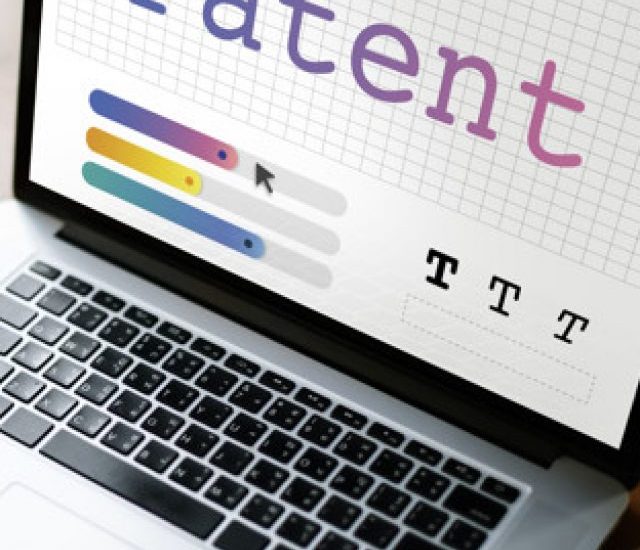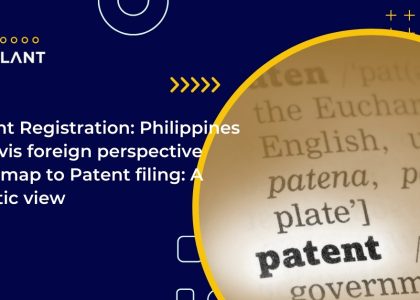

Patent Prosecution: A to Z Guide
Patent prosecution entails arguing for the patentability of your invented machines, devices, methods, or systems. This starts with applying for and receiving a patent from the appropriate government agencies. It also involves asserting your Intellectual Property’s novelty through submitting supplementary materials, including design blueprints and detailed instructions.
However, the term defining this process can sometimes be misunderstood or confused by those new to the world of IP law. To mitigate the chances of something like this ever happening, diving deep into the ins and outs of patent prosecution will be critical. The more prepared you are before you begin, the more likely your quest for patent rights will be successful, regardless of where you are.
In this article, we will discuss critical fundamentals of patent prosecution, such as:
- How it differs from patent litigation (and defense).
- Which types of intellectual property (IP) can be protected through patents, as opposed to other legal certificates such as utility models, trademarks, or copyrights?
- Notable legal variations across a range of worldwide countries (including, but not limited to, the United States, Europe, Japan, and the United Arab Emirates).
Patent prosecution vs. patent litigation
Despite its name, patent prosecution is not a legal action – at least not in the way that term is commonly used in contexts other than intellectual property law. In other words, the process is not rigged in favor of the defendant: That would be patent litigation, which may commence only once you have an accepted patent that has been jeopardized by someone’s act of infringement against it.
Fundamentals of patent prosecution
As previously stated, prosecution refers to filing a patent application with all of the required patent offices in the markets where you desire to retain IP protection until the patent is granted. Patent authorities in certain countries, such as Luxembourg, Belgium, and the Netherlands, perform just a formal assessment before awarding this privilege. The formal technique is primarily concerned with confirming the specifics of the patent application, such as whether the applicant provided all the needed information and completed all required tax payments. Other nations, such as Germany, France, and the United Kingdom, place a higher value on the procedure known as substantive examination, which goes too far more extraordinary measures to evaluate patent eligibility, such as showing the presence of the inventive step.
Once a patent has been awarded in one or more specific nations, you will wish to continue the prosecution by filing a patent application with the World Intellectual Property Organization on a global scale (WIPO). This will protect you under the Patent Cooperation Treaty (PCT) rules and its 150+ signatory nations, thereby making your patent rights worldwide.
The role of patent attorneys
Patent attorneys assist inventors and the organizations they represent in preparing and submitting patent applications. They will also assist their clients in developing a thorough IP protection plan.
They would advise an inventor, for example, on whether it was better to file in a single country rather than submitting paperwork to an organization covering a group of countries, such as the Europe Patent Office (EPO), the African Regional Intellectual Property Organization (ARIPO), the Eurasian Patent Office (EAPO), or the Gulf Cooperation Council Patent Office (GCCPO). Patent attorneys would also inform clients if any other IP protections (utility models, trademarks, designs, copyright, etc.) were appropriate to obtain in addition to their patent or if a branching-off is possible if a patent application lapsed, as is permitted under Austrian and German IP law.
Patent attorneys must be authorized to represent clients before various national, regional, and international IP regulatory bodies, such as the European Patent Office (EPO), the United States Patent and Trademark Office (USPTO), IP Australia, the United Kingdom Intellectual Property Office (UKIPO), and many others around the world.
What patents protect (and related matters)
A patent can be issued to “a product or technique that typically provides a new way of doing something or gives a new technological solution to a problem,” according to WIPO’s definition, which roughly matches the legislation in most countries with comprehensive IP law. Any object that falls within those conditions is considered an “invention.” According to WIPO, a “product” does not have to be a physical item or equipment; it might refer to “a chemical substance, or a technique… or a process for creating a certain chemical compound.” Furthermore, most contemporary devices contain dozens or hundreds of inventions, each of which has its patent.
Determining patentability
Before proceeding with prosecution, you must prove without a shadow of a doubt that the innovation you wish to patent is patentable. Concepts such as originality (or “non-obviousness”), the innovative step, and industrial application will all apply in some form in addition to the factors outlined in this section.
Regional distinctions
Before enlisting the assistance of a patent attorney, you must first determine whether innovations are complicated to patent or require protection(s) other than patents.
Some of these are regional issues or constraints:
- The United States Supreme Court has decided in some decisions, most notably Mayo Collaborative Services v. Prometheus Laboratories Inc., that techniques based on naturally existent “rules of nature” cannot be copyrighted since they are not unique ideas.
- In Alice Corp. v CLS Bank Int’l, the United States Supreme Court held similarly on the patentability of systems that imitate “abstract conceptions,” even if such compositions are implemented individually. Anyone applying for a US patent should keep these ideas in mind, primarily if they work in health or the life sciences.
- While artificial intelligence (AI) is gaining popularity in the technology industry, one must be cautious in Europe when patenting products made with the aid of AI. As reaffirmed in its final judgment in the DABUS case, the EPO takes a definite stance against granting patent protection to an AI platform.
- Patentability may be prohibited in areas such as the Middle East for “violating public order or morality,” as in the UAE. The significance of Dubai as a big yet still-expanding commercial hub emphasizes the necessity of understanding that distinction and ensuring that every UAE patent application complies with it.
Other patentability issues exist, to varying degrees, regardless of wherever you are:
- Software, for example, is usually tricky (and occasionally impossible) to patent, as are databases. They can be provided limited protection by copyrighting the source code of the former and filing for and securing a database right for the latter.
- Similarly, a “process” primarily presented as a design rather than one with functions detailed in accompanying materials may be protectable as an industrial design. Still, it will not be patentable under European IP law. However, it would be patentable in the United States if you sought a design patent rather than a utility patent.
Patent applications
After reading up on the relevant legislation, you can opt to start the patent prosecution procedure. The essential paperwork usually is available online. In principle, you would visit the websites of the relevant IP regulating authorities, request them, carefully fill them out, and resubmit them with payment for any associated costs.
However, you must be aware of the magnitude of the torture you will expose yourself to, whether alone or as part of a team. Even if your business has a legal staff or a lawyer on retainer, are they IP-experienced? Are they licensed to practice intellectual property law before various foreign patent regulators? If your legal assistance provider cannot say “yes” to both of those questions, you will need to hire an attorney who can.
Understanding the patent prosecution process
Patent prosecution entails some unique phases. First, you and your coworkers will draught the patent application, blueprints, and other supporting documentation for your submission. Then it would be best to think about how many nations you want to file in. Procedures across several countries must be simplified to keep a broad bid for patent clearance on track. If additional domestic sales prospects arise, you may submit in new jurisdictions independently within 12 months of the initial filing. However, it is preferable to identify and file patent applications in all areas where you feel your IP can be promoted and sold concurrently.
Application and examination costs
Fees must be paid while filing and vary depending on the nation or location, among other variables. The initial formal filing fee in the United States will be little more than $2,000. Then you have to wait for the appropriate authorities to examine your submission. During this period, you can make requests for examination in the hopes of speeding up the procedure, the cost of which, depending on where you live, may or may not have been included in the initial filing charges. For example, the United States contains them, although Japan and South Korea do not. The overall official charges fee in Europe is €3,785 or more.
The official expenses of submitting a patent vary by jurisdiction, and you should be aware that certain IP offices do not include an accelerated tax in the first application fee.
Obtaining PCT certification
You can and should file under the WIPO’s PCT framework no later than one year following your first patent application filing in a specific country. Of course, this comes with expenses and requires national authorities of your choice, who examine the PCT application separately from your initial application but will be incredibly helpful in the future, owing to how many nations recognize the PCT.
Additional best practices for prosecution
Before your patent application is even granted, other inventors or firms (i.e., your rivals) might file third-party remarks stating that it is not patentable. If such scenarios arise, you must immediately have explicit defenses in place, highlighting the need for an excellent legal team.
As you await regulatory judgments, you should also pay close attention to the passage of time. When patent attorneys or examiners from certain patent office’s seek further information from you, please provide it as soon as possible. Ignoring such demands for an extended period might result in the rejection of your patent application in practically all jurisdictions.
If you are refused during the examination, you must file an appeal notice or request to talk with the examiner assigned to your case for a hearing as soon as possible. Allowing any time to pass might result in a permanent lapse if the remedy’s deadline has passed. If a patent application has lapsed, a patent attorney can assist in restoring it by claiming either inadvertent lapse or due care, depending on the rules of the countries involved. For example, suppose you can demonstrate that any missed deadlines or other circumstances that led to the application lapse were not your responsibility. In that case, the EPO may reinstate your application under the provisions of restitutio in integrum.
The bottom line
If the prosecution process is bungled even little, it may be a nightmare, but it doesn’t have to be. Brealant as your patent prosecution partner. Our global teams, full-service legal services personnel, and other experts will help you maximize your chances of patent approval, regardless of how many different inventions you want to patent or how many countries or regions you want to establish IP rights in.








